Culvert crossings are used to cross small to medium sized rivers where there is low gravel movement that could fill the culvert. They need careful installation. Follow the installation requirements within the resource consent or NES-PF permitted activity rules.
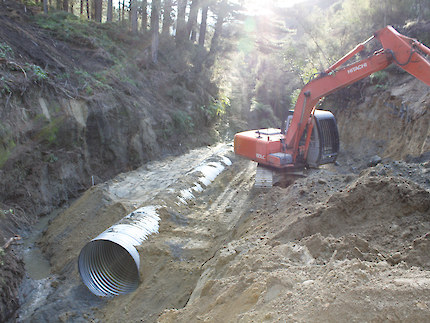
- The culvert is being installed in suitable weather and low stream flows
- Disturbance has been limited to the immediate work site
- The stream is diverted temporarily
- The trench is at the correct depth and grade, so the culvert’s inlet and outlet are 20% below the streambed level
- The trench width is adequate to compact the backfill
- Construction occurred outside the fish spawning season
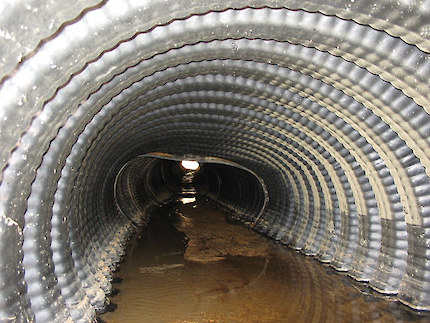
- A crushed culvert failed because of poor fill compaction, damage from equipment, or not enough fill depth above it
- Failure can lead to a significant safety or environmental incident
- This will be an expensive fix

- The pipe is being carefully backfilled with clean fill, and compacted in layers
- It has been bedded on a firm base to prevent water flowing under it

- Poor compaction and lack of a headwall has led to water bypassing the culvert

- The headwall helps prevent inlet damage from floods
- The bagged concrete headwall should last
- The pipe is of the correct size and length
- New rules require 20% of the culvert to be below stream level

- The headwall is ineffective (arrow)
- The pipe is too short because the over-steep fill is already slumping
- Unstable fill above the culvert entrance could block it
- This structure could fail in a heavy rain

- The pipe is long enough so that culvert batter slopes are no steeper than normal fill slopes
- The fill has topsoil placed to help with grass growth
- The culvert is marked
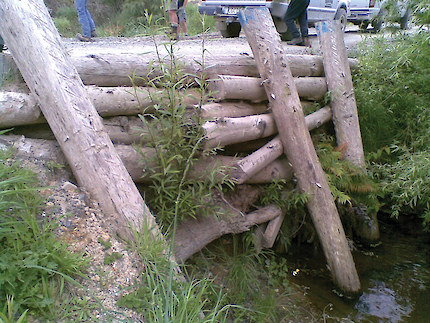
- Lots of problems! No headwall, the culvert is too short, and the road width is unsafe
- Untreated radiata logs will quickly rot, making the problem worse
- The culvert mouth is so far back it can’t be seen in the photo

- The culvert exit is armoured with concrete wing walls so is unlikely to scour
- The culvert is set correctly in the streambed
- The fill slope is not too steep
- The fill was stabilised
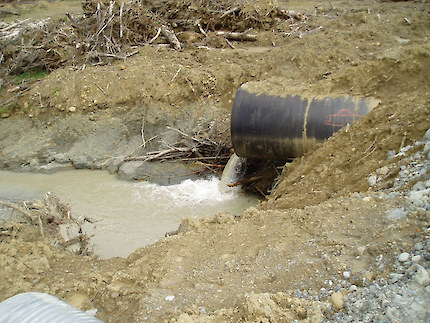
- Poor culvert installation has led to the outlet scouring
- The culvert is above the streambed and the lip is perched out from the bank. This prevents fish moving upstream
- This is in breach of regulations
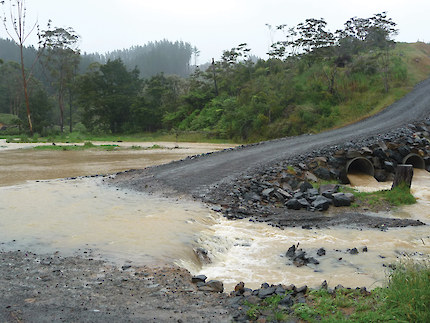
- The crossing was designed with an armoured spillway to reduce the risk of culvert ‘blowout’
- Overflows began at the road’s low point, which is rock armoured to reduce damage
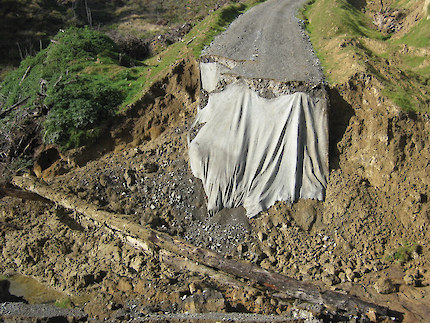
- No armoured headwall was installed
- The culvert was too small
- The fill above the culvert was the weakest point in the installation
- A storm spillway was not built. It could have easily been done in this location
- An expensive rebuild is now needed
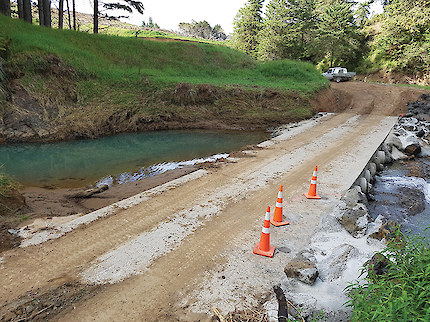
- Concrete is effective at armouring culvert outfalls
- Take care when pouring concrete that it doesn’t enter the water, as cement kills fish and stream life
- Rip rap is an effective fish ladder

- The culvert outlet is not at streambed grade
- The culvert does not provide fish passage
- One correctly sized pipe is better than two small pipes that will be prone to blocking
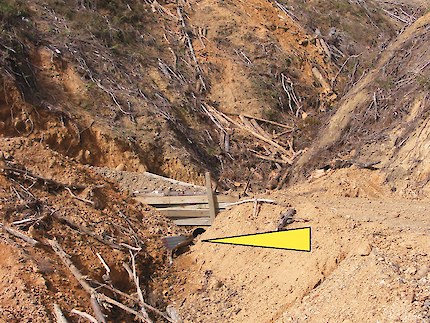
- This culvert looks doomed to fail
- The pipe is small (arrow) and can easily block with debris immediately upstream
- The culvert is not long enough, and the fill has been supported by a few poorly anchored boards
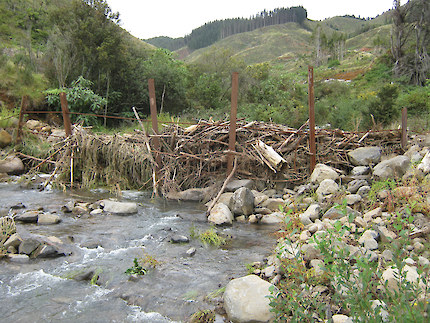
- On vulnerable sites, install a debris barrier upstream if possible
- This one uses railway irons and wire rope anchored by deadmen
- Railway irons in stream beds require resource consent
- Ensure debris barriers can be maintained, and debris removed
- The size of the catchment will influence the design of the debris barrier
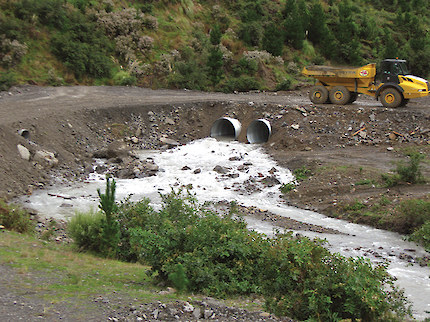
- The culvert does not interrupt the fish passage
- The bottom of the culvert is about 20% below streambed level so fish can go through the culvert

- Fish ladders help fish move up and through culverts